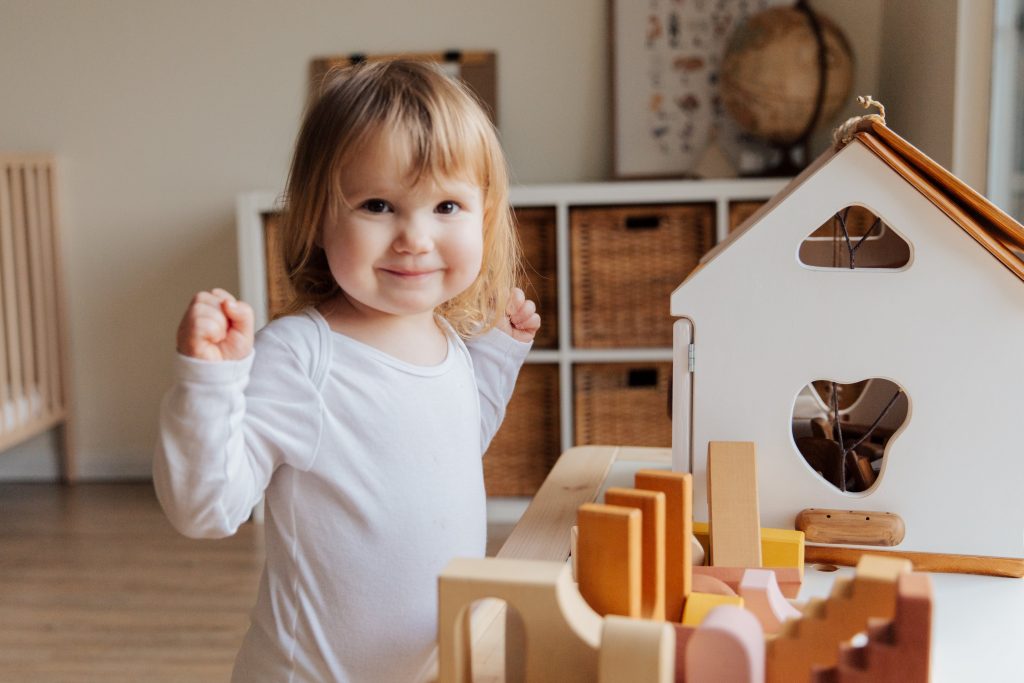- Childproof each room, especially the kitchen, and secure outdoor play areas to minimize safety hazards.
- Regularly clean areas where food is eaten and control allergens to maintain health and hygiene.
- Secure utilities and electrical systems to prevent accidents, including covering sharp edges and keeping cords out of reach.
- Regularly test water quality, improve energy efficiency, and assess indoor air quality for a healthier environment.
- Have safety devices, a first aid kit, and an up-to-date emergency plan ready to ensure child safety.
Creating a safe and healthy home environment for their family is paramount to parents. It encompasses various aspects, including childproofing and cleanliness, which contribute to ensuring the well-being and security of their children.
By taking proactive measures to childproof their home, parents can minimize potential hazards and create a protective space where their children can thrive and explore without unnecessary risks. In addition to childproofing, maintaining cleanliness is another crucial element in creating a safe home environment.
By keeping their living space clean and hygienic, parents provide a healthy environment that promotes overall well-being and reduces the chances of illness or infections. By prioritizing childproofing and cleanliness, parents ensure that their family has a secure and hygienic space to grow and develop.
This safe environment not only protects children from potential accidents or injuries but also nurtures their sense of security and comfort. This blog post will be your ultimate checklist; you’ll be on your way to achieving the cleanest and most secure home possible.
Childproofing Your Home

Regarding your child’s well-being, ensuring their safety is of utmost importance. This is why childproofing your home is crucial in creating a secure environment for your little one. Here are some essential areas to consider when childproofing your home:
Safeguarding Every Room
It’s essential to ensure every room in your house is safe for your child. For instance, make sure your child’s bedroom is safe from any strangulation or choking hazards. Install safety gates on stairways or doorways to prevent falls, and ensure that windows have safety stops installed to prevent them from fully opening.
Childproofing the Kitchen
The kitchen is a place that’s rife with hazards, so it’s critical to take extra care when childproofing it. Keep all hot items, such as pots and pans, out of reach, and make sure that fire extinguishers and smoke detectors are appropriately placed.
Outdoor Safety and Play Areas
Outdoor playtime is exhilarating for kids, but it’s crucial to childproof your yard and outdoor play areas. Install a secure fence around your pool if you have one, and make sure any outdoor toys, such as swing sets, are age-appropriate and sturdy.
Maintaining Cleanliness and Hygiene
Ensuring cleanliness and hygiene in your home is paramount, particularly when you have little ones running around. The following are some tips to help you keep a clean and healthy home environment:
Everyday Cleaning for Health
Daily cleaning is essential, especially in areas where food is consumed. Clean kitchen countertops and floors daily to eliminate spilled food particles. As for your bathroom, clean and disinfect the tub, sink, and toilet at least once a week to prevent bacterial growth.
Allergen Control
If your child suffers from allergies, reducing the number of allergens in your home is a must. Keep your home’s humidity under control by regularly cleaning any humidifiers or dehumidifiers. Periodically bathe and groom any pets and keep them off your furniture and bedding.
Childproofing Utilities and Electrical Systems
Apart from childproofing your kitchen and living areas, ensure you’ve taken the necessary steps to secure your utilities and electrical systems. Cover any sharp edges or corners on heat registers or radiators, and block any radiators your child could climb on.
Emergency Preparedness and Safety Measures
By following some critical kid-safe rules and thinking ahead for emergencies, you can take proactive steps that have the potential to be life-saving. Here are some safety measures and emergency preparedness steps:
Water Quality Testing and Safety

Make sure that the water in your home is safe for your family to use. To ensure the safety and quality of the water you and your family use daily, it is crucial to seek an accurate home water test kit. By gaining a precise understanding of the contents of your water, you can identify any potential contaminants or impurities that may be present.
Armed with this knowledge, you can then explore practical methods and solutions to enhance the overall quality of your water supply, providing peace of mind and a healthier living environment for you and your loved ones.
Energy Efficiency and Electrical Safety
Improving energy efficiency and ensuring that your electrical systems are safe can save you money and protect your home from fire hazards. Install child-resistant covers on stovetop burners, and never leave any lit candles or flames unattended.
Indoor Air Quality Assessment
It’s essential to assess your home’s indoor air quality as it can affect your children’s respiratory health. Regularly clean any air conditioning ducts and change air filters frequently. Limit your home’s exposure to smoke from cooking, tobacco, or candles.
Safety Devices and Emergency Planning
Finally, proper safety devices and emergency plans can make all the difference in keeping your child safe. Ensure you have a first aid kit and essential medications on hand, and make sure your phone numbers and addresses are up to date.
In conclusion, childproofing and cleanliness are critical in keeping your family healthy and safe. Ensure that your home is adequately childproofed, your utilities and electrical systems secured, and maintain an everyday cleaning routine.



















